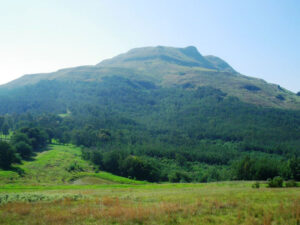DEVELOPMENT OF A STRATEGIC PROVINCIAL NATURAL RESOURCE MANAGEMENT PLAN
Research Context
The Department of Environmental Affairs (DEA) NRM programme represent one of government’s most significant responses to the degradation of natural systems and the loss of associated ecosystem services. These programmes contribute to poverty alleviation through the labour intensive approach to NRM and the associated training and skills development. The various National Programmes operate regionally with planning undertaken at a provincial level by regional structures. There also various other National and Provincial Departments who operate similar, complimentary programmes to DEA, and who utilise similar operational models and methods. Examples of such programmes include the National Department of Agriculture, Forestry and Fisheries’ (DAFF) LandCare Programme, and the KwaZulu-Natal Provincial Department of Agriculture and Rural Developments ‘Alien Invasive Species’ Programme. While these departments and programmes all work towards a common outcome, they plan and operate in relative isolation of each other. This lack of co-ordination reduces the efficiency and effectiveness of this effort. Reversing this situation requires that there is a common understanding of the NRM priorities in the province and co-ordinated planning focussed on addressing these agreed priorities. In recognition of this, the DEA NRM programme has requested the Institute of Natural Resources NPC (INR) to assist in developing a 5 Year Strategic NRM Plan for the KwaZulu-Natal province.
Location: KwaZulu-Natal Province
Duration: 3 years (July 2015 –April 2017)
Project Aim & Objectives: To optimise government resources for NRM in KwaZulu-Natal through the development of a 5 year strategic plan that coordinates NRM operations of all agencies.” This requires that the following specific objectives are addressed in developing this plan:
i. A common understanding of the NRM priorities in the province is established.
ii. Analyse existing plans and procedures and the strengths/weaknesses.
iii. Identify key issues/points of duplication, inefficiency across the project life cycle.
iv. Develop an inclusive plan that facilitates effective use of resources with reduced operational costs while optimising investment into poverty relief.
Outputs and Outcomes (2015/6)
The first year will involve the development of a 5 year strategic plan for KwaZulu-Natal (KZN). The following year will focus on developing plans for category 1B species and aquatic alien invasive species for KZN. The model and approach established for the KZN plan may also be applied in Mpumalanga and other provinces in years 2 and 3. The approach and activities for year 1 are:
i. Foundation Phase – Establish an understanding regarding the existing plans, and in obtain stakeholder input to and support for the project. This requires the identification of an agreed set of NRM priorities for the province. Specific activities include: 1) Inception Meeting and report, 2) Integrated Workshop: To establish a common basis for integrated planning.
ii. Detailed Analysis – Through specific engagement with individual government NRM agency/roleplayers to understand in detail where, how and when they operate – unpack their existing planning.
iii. Strategic Plan – Converting the understanding and inputs from the stakeholders in compiling a draft strategic plan through a consultative process.
Stakeholder Engagement
There will be workshops involving the various agencies to achieve the integration necessary to arrive at an accepted and appropriate plan that will be implemented. This will be supplemented by specific one-on-one engagement with the various agencies to get their specific inputs.
Workshop Material
The first stakeholder workshop was held on the 23rd of July 2015. Links to the presentations given by various stakeholders are given below, together with the minutes and outcomes of the workshop.




